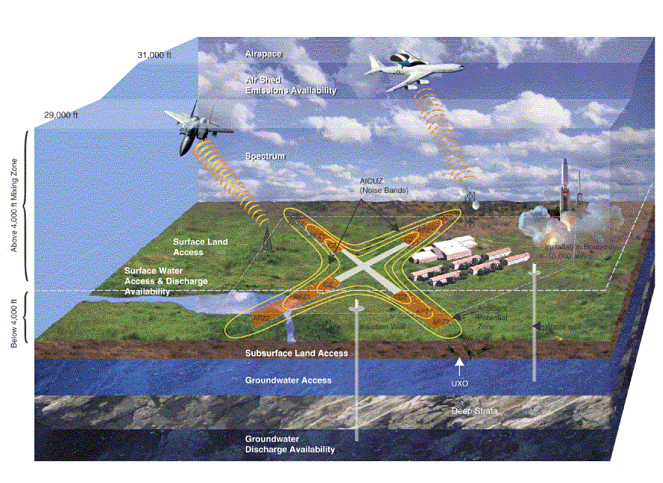
Carbon sequestration is the process of capturing and storing greenhouse gases, primarily carbon dioxide, rather than releasing these gases into the atmosphere. The Air Force is examining land management practices that represent opportunities to use natural processes that absorb carbon from the atmosphere into vegetation and soil (terrestrial sequestration) as a means of mitigating future climate change. While greenhouse gas (GHG) emissions are currently not regulated at the national level, recent policy actions by all branches of the Federal government indicate they may soon be centrally regulated within the United States. As the largest single consumer of energy in the Federal government, the Air Force has a particular interest in how emerging GHG management requirements may impact operations and the Air Force commitment to environmental stewardship and sustainability.
Currently terrestrial carbon sequestration is the most applicable method to capture greenhouse gasses on an Air Force installation. Terrestrial carbon sequestration refers to the use of plants to capture and store carbon dioxide through photosynthesis.
Based upon the preliminary analysis with the U.S. Forest Service Carbon On-Line Estimator (the COLE model), approximately 585,000 acres of forested land on 26 Air Force installations are estimated to be responsible for the sequestration of nearly 37,243,000 Metric Tons (MT)
of carbon. It is important to remember that this forest land carbon sequestration estimate represents a snapshot in time and does not represent carbon sequestered on an annual basis. Rather, the results should be thought of as the amount of carbon that would be released into the atmosphere if all forest acres were harvested and destroyed in one year. Therefore, it is critical to consider
tree reuse whenever trees
must be removed.
Alternative carbon sequestration methods are being researched
which rely on capturing greenhouse gasses at the source then
delivering and storing them under the Earth’s surface or deep within
the ocean. These methods may, in the future, become viable carbon
sequestration techniques, but have not yet been proven to be a safe
or cost effective solution for the Air Force.

Figure 1. Carbon emissions and sequestration opportunities at a typical Air Force Base

|

